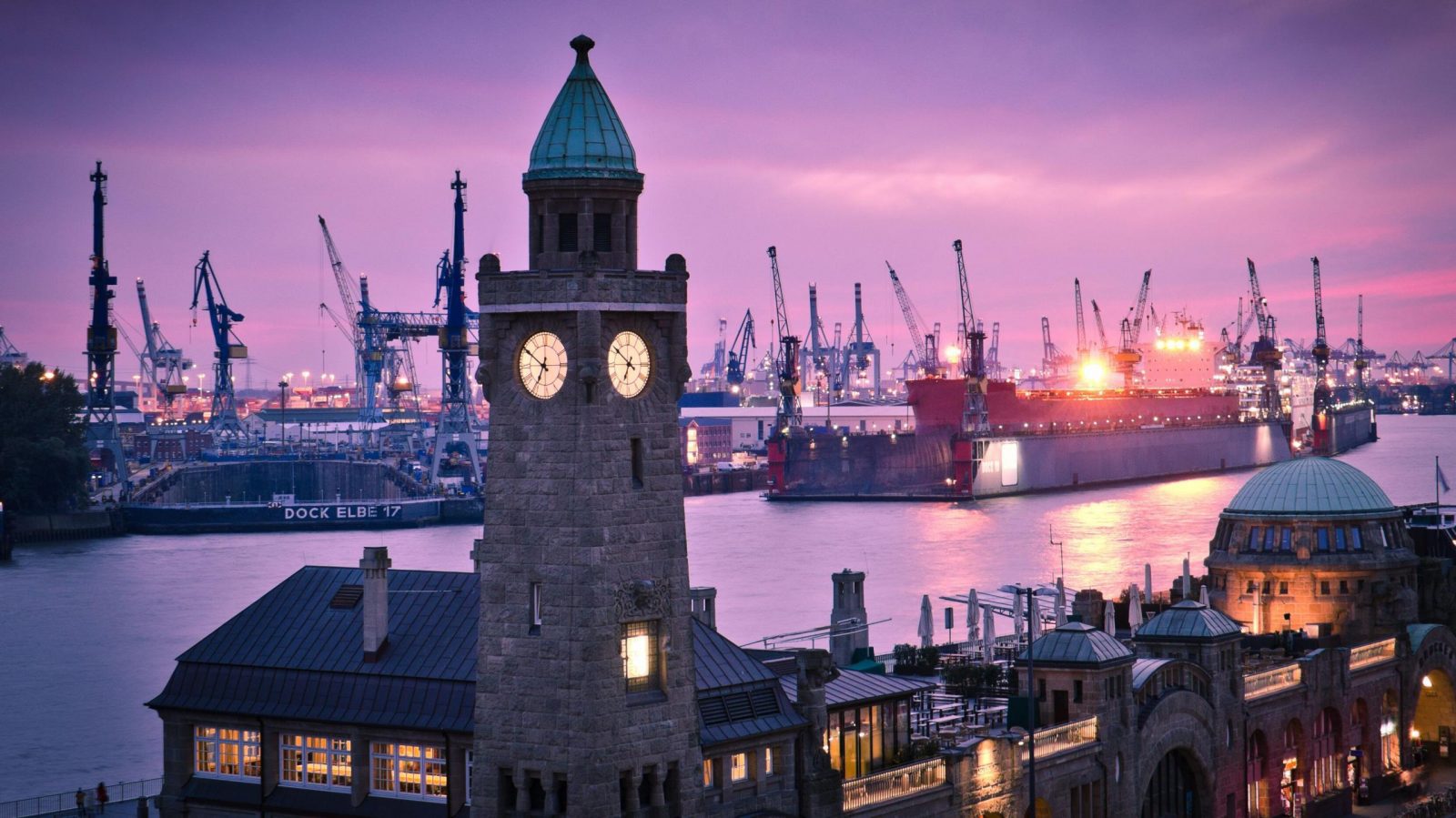The suspension of talks between the International Longshore and Warehouse Union and the Pacific Maritime Association is not the only labor issue in the pipe of trade.
Another one looms.
Germany.
The terminal operators union is threatening to strike over pay and increased work requirements. An apparent labor slowdown can be tracked by the flow of containers.
SONAR’s Ocean TEU volume Index shows the continuous drop in the departure of vessels.

Crane Worldwide Logistics data shows there are more than 20 vessels in waiting position for discharge at the Port of Hamburg.
Andreas Braun, EMEA ocean freight product director at Crane Worldwide Logistics, told American Shipper that the coordination between terminal operators and intermodal operators is getting worse.
“We expect further worsening in the ports of Germany to come,” explained Braun.
The Port of Hamburg is known as the “Gateway to the World.” The largest seaport by volume in Germany, Hamburg is the third-busiest port in Europe and the 15th largest in the world. Bottom line: This port matters.
The container pileup has only been exacerbated by Russia’s war on Ukraine. Containers need to be opened and Russian-banned products need to be taken out by customs. This slows the processing of containers so they can be filled with European exports to the United States.
On top of that, the port also has suspended receiving export trains until further notice. The port listed the primary problem as “fully occupied entrance rail tracks, delays of trains departing from Hamburg, reconstruction works, and irregularities and limitations in the external infrastructure.”
This labor strife is the fourth horseman of logistical uncertainty, galloping along with the stalled negotiations between the ILWU and the PMA, the impending container surge after Shanghai reopens and peak season.
Travel time from Hamburg to the Port of New York and New Jersey is already ticking up.

But as we have seen with carriers’ preference in sending export empties back to China instead of moving U.S. loaded exports, will the carriers do what Rooney suggests? This makes perfect sense but the almighty dollar has been swaying good judgment.
“Once the backlog in China on the Far East westbound trade will be cleared, the congestion situation in front of the NWC (North West Continent in Europe) ports and the container availability will become worse,” warned Braun. “Shipping lines already have problems planning their exports based on the inflow of their containers on the import side. Shippers need to be prepared that rollings will increase and prebooking windows will be extended.”
The rejection rate is already creeping back up.

The flow of trade rests in the hands of the labor unions. Container processing and port productivity are key indicators of this.
Unfortunately, we are in a climate of no compromise.
Winston Churchill once famously said about World War II, “Never let a good crisis go to waste.” While something positive was created (the United Nations), that quote is now normally associated with negative actions of grandstanding and intentional selfish actions.
The chapter of this pandemic story is still being written. The pen is in the hands of the trade participants. Right now the story is a cliffhanger, adding additional uncertainty for logistics managers to navigate.






